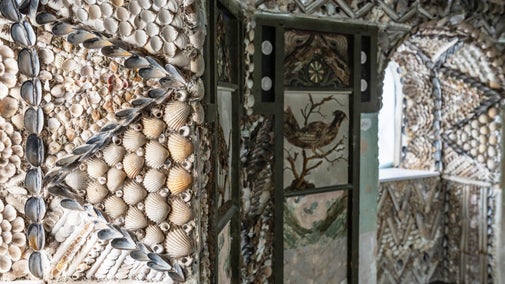Clocks and Pests: A day in the life of a Collections Assistant

Three Collections Assistants work at A la Ronde to keep things ticking. They work to provide important preventive conservation, keeping the collections safe and in top condition. Part of their role is to monitor, wind and care for the many clocks in the collection at A la Ronde, as well as check and monitor for pests in the house.
The Collections Assistants at A la Ronde have a very varied role; no two days are the same!
The team are responsible for the 'preventive conservation' of the collections. This means that by keeping the house clean and monitoring it for any damage or deterioration, they can prevent problems before they become harmful.
Wind-up Tuesdays
A la Ronde has 8 clocks in its collection and they need frequent care and attention.
The Collections Team wind them every week, usually on a Tuesday. However, this process is more than simply keeping them ticking. The team notes down any discrepancies on time and number of turns whilst winding to help us understand their condition and any work that might need to be done. This information monitored by our Clock Conservator, Dale who visits the property once a year and gives due care and attention to any of the clocks which require it.
Pesky Pests
In order to keep the collections spick and span, the team monitor numbers of pests throughout the house.
The team have approximately 30 pest traps located around the showrooms and stores of the property. They are ‘blunder traps’ with a sticky base which traps any pests walking around the house.
Luckily A la Ronde has very few pests as it is exceptionally clean. We do have the odd silverfish, moth and woolly bear (carpet beetle larvae), but no more than would be expected. It is important to monitor the traps every quarter to keep on top of numbers and ensure the collections are safe.

Pests can do all sorts of different damage, depending on what you find.
Silverfish eat paper, grazing the surface and making irregular holes, therefore books are at risk, so the team carefully monitor any presence. Moths like to eat fabric and also cause damage to natural history collections, therefore, they are a high risk to spaces like the Shell Gallery and all rooms containing fabrics or feathers.
The team use a pest chart to identify anything found in the traps and then send the data to the Assistant National Conservator.
The Compendium
The Compendium is a collection of stories to delight and surprise. You can explore all things A la Ronde here in one central place for the first time. We will be adding new stories for years to come.

Our Conservation Story: Conserving the past, creating the future
Learn more about the conservation work undertaken at A la Ronde during the 'Conserving the Past, Creating the Future' project.

Our work at A la Ronde
Our conservation team work hard all year around to look after the special collections of A la Ronde. Find out more about the work they do.






